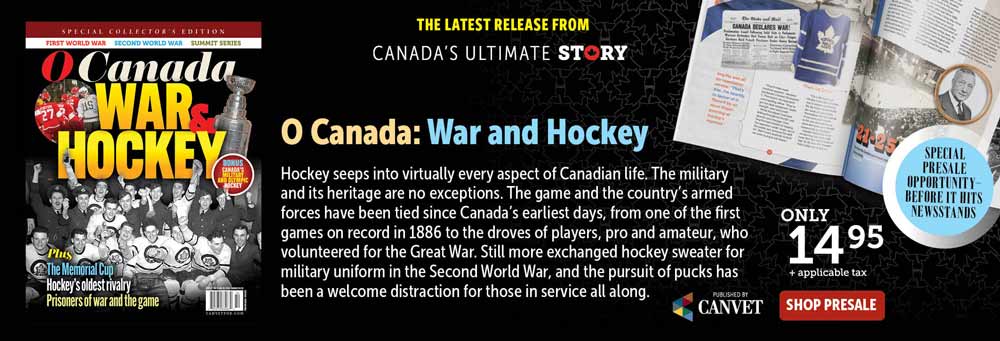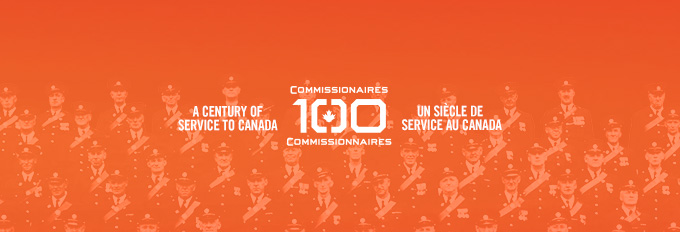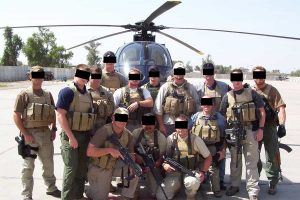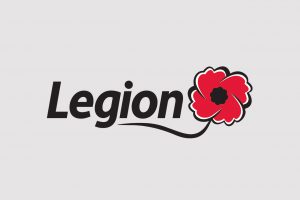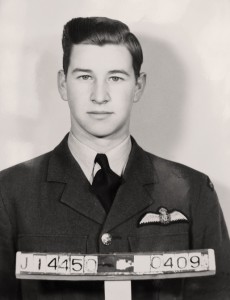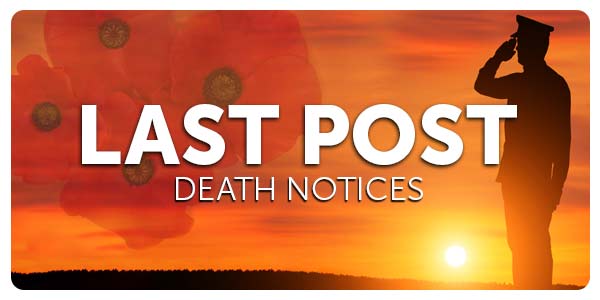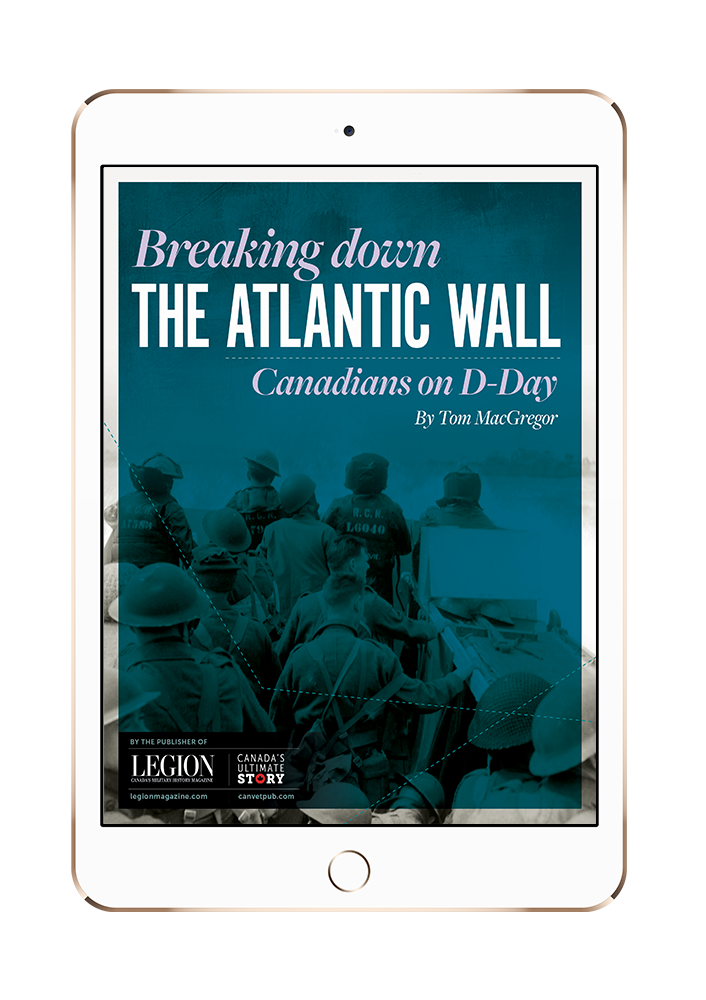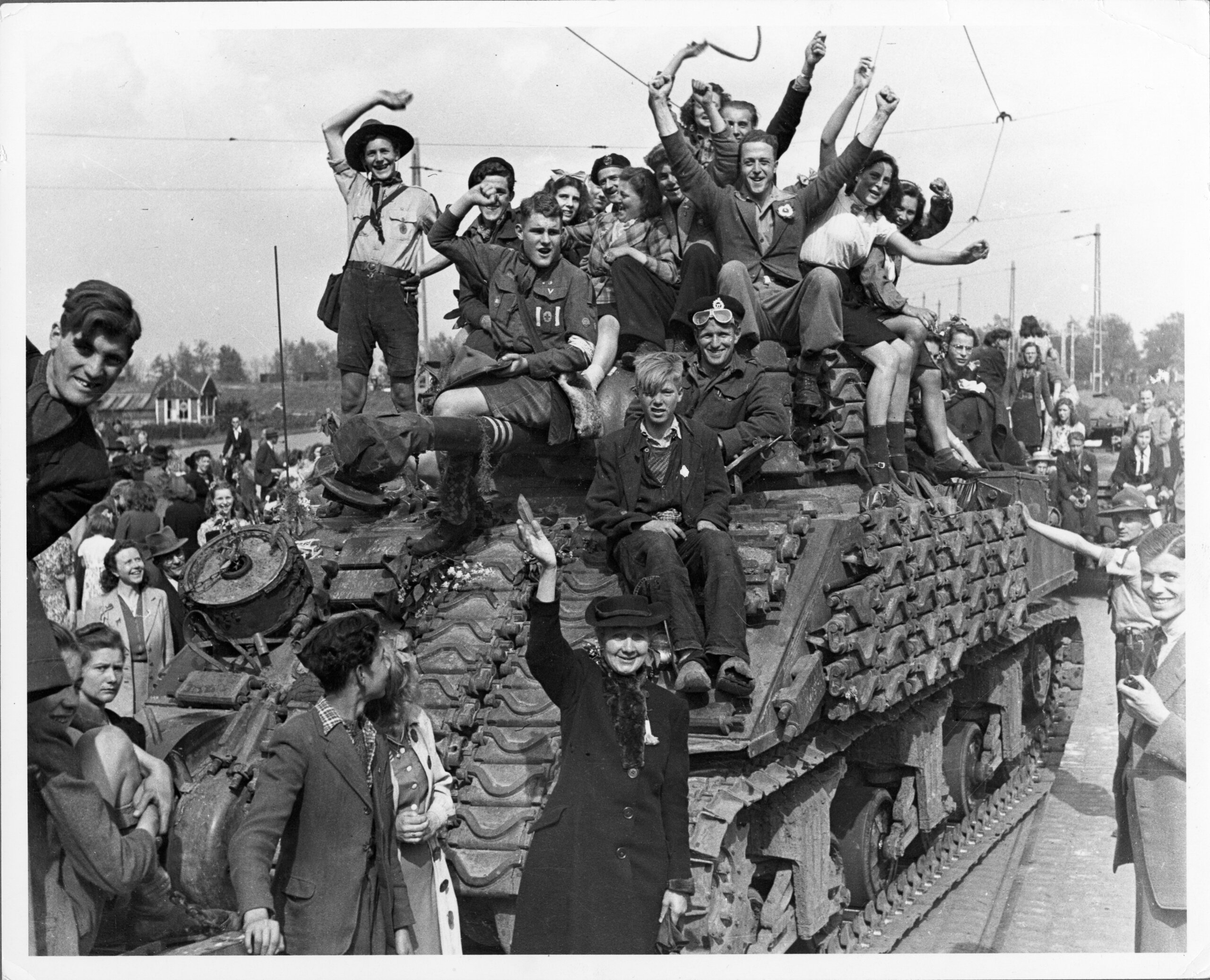
Civilians surrounding a Sherman tank of the 4th Canadian Armoured Division during the liberation of Hilversum, the Netherlands, 7 May 1945. [George Metcalf Archival Collection Canadian War Museum 19920085-1384]
The thought-provoking “Liberation! Canada and the Netherlands, 1944-1945” display was launched in 2020, but has subsequently been revitalized. It runs until May 9, 2025, detailing the “sweetest of springs” through 11 key images and six personal stories. An online version is also available on the museum’s website.

Canadian soldiers have a christmas dinner in the Netherlands, 1944.
[George Metcalf Archival Collection. Canadian War Museum 20060165-003]
On the exhibit’s evolution
The previous version [of the display] was initially created as part of a plan to have temporary, smaller-scale exhibitions, including one for the 75th anniversary of the liberation of the Netherlands in 2020. Of course, as we know, 2020 did not unfold the way that people had anticipated. So, we actually started with a digital version.
What was eventually developed into a physical exhibition has now been updated to reflect the fact that it’s five years on. It features many of the same stories as before, but we’ve also made it more accessible with the likes of transcripts and QR codes.
On what guests can expect
Liberation! builds on the museum’s permanent exhibitions by delving deeper into the larger stories like the Battle of the Scheldt estuary, the continued liberation in 1945, the Hunger Winter [where the Nazis starved the Dutch populace] and what happened to the Canadians after the fighting in the Netherlands came to an end.
However, there are also more personal stories about the Canadians involved. For instance, Farley Mowat makes an appearance, who many will recognize for his books and environmental advocacy, but might not know much about his WW II experience in northwest Europe. Or there’s the story of Canadian soldier Cecil Ringguth and his Dutch war bride Petronella (Nell) Greefkes, which is as much about her experience of German occupation as it is of his role in the liberation.
On remembrance in the year 2025
Eighty years have passed since the liberation of the Netherlands. Unfortunately, the number of people who participated in or witnessed those events is growing fewer and fewer with each passing day and year. We are now moving from the realm of lived experience into the realm of history, much like what occurred with the First World War veterans and even those who were just children during that conflict.
Today, there remains a strong link between Canada and the Netherlands [since the liberation], with the Canadian Tulip Festival in Ottawa being a perfect example of that enduring bond. Dutch citizens still tend to Canadian war cemeteries, occasionally lighting candles at their gravesites in remembrance. These are not the people who were there [during wartime]. By and large, they’re the children and grandchildren and great-grandchildren. Clearly, that connection has prevailed through generations.
On the future of remembrance
The way people remember and the way people commemorate has changed over time. If you’d said 30 years ago, around the 50th anniversary, that the internet would play the role it does, you might have received some strange looks. So, 20 years from now, people may have a completely different way of looking at and understanding events, as well as perhaps different ways of commemorating.
One of the things that people may draw on later down the line is, of course, the oral history that’s been unfolding since the 1960s, if not earlier. My colleague, Michael Petrou, the museum’s historian for veterans’ experiences, has recently unveiled the “In Their Own Voices” project [read more in Legion Magazine’s “Military Health Matters” column of the January/February 2025 issue], which is an example of just that. Such oral history interviews, captured for posterity, will probably come to play a bigger and bigger role once the veterans and witnesses are sadly no longer here.
This abridged interview has been edited for brevity and clarity.
Advertisement



